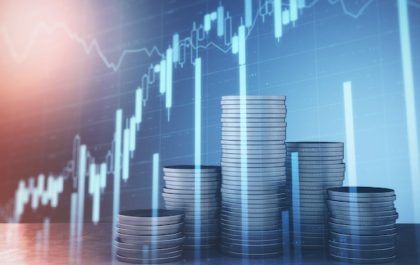Table of Contents
Introduction
The foreign exchange market Forex and FX before the foreign exchange market is an international distributed or over-the-counter (OTC) market for foreign exchange trading. This market determines the exchange rates of each currency. It includes all aspects of buying, selling, and exchanging currencies at current or fixed prices. In addition, to trading volume, it is the primary market in the world, followed by the credit market.
The leading players in this market are the international central banks. Financial centers around the world function as trading anchors between a wide range of multiple types of buyers and sellers throughout the day, except on weekends. Since currencies It always traded in pairs, the foreign exchange market does not fix the absolute value of a coin. Instead, it determines its relative value by selecting the market price of one currency if paid with another. Ex: 1 USD is worth X CAD, CHF, JPY, etc.
What is a Foreign Exchange Market

The foreign exchange market works through financial institutions and operates on various levels. Behind the scenes, banks use a smaller number of financial firms called “dealers,” who are involve in large amounts of currency trading. Maximum foreign exchange traders are banks, so this behind-the-scenes market is sometimes called the “interbank market” (although some insurance companies and other financial firms are involved). Trades between merchants can be huge, involving hundreds of millions of dollars. Due to the issue of sovereignty regarding two currencies, Forex has little (or no) oversight entity regulating its actions.
The foreign exchange market helps global trade and investment by allowing the conversion of currencies. For example, it will enable a company in the United States to import goods from member states of the European Union. It especially members of the Eurozone, and pay euros. Also even if its income is in US dollars. It also supports direct speculation and the relative valuation of currencies and carries belief based on the interest rate differential between two currencies.
In a typical foreign exchange contract, one party buys a certain amount of one currency by paying with a certain amount of another money.
The modern foreign exchange market began to form in the 1970s. It followed three decades of government restrictions on foreign exchange transactions. Under the Bretton Woods money management system. Which established the rules for commercial and financial relations between central industrial states after World War II. Countries have gradually moved to floating exchange rates since the previous exchange rate rule. Which remained fixed under the Bretton Woods system.
Single Market Structure Characteristics
Its huge trading volume, which represents the largest asset class in the world, resulting in high liquidity;
its geographical dispersion;
Also, its continuous operation: 24 hours excluding weekends, that is, exchanges from 22:00 UTC on Sunday (Sydney) to 22:00 UTC on Friday (New York);
the variety of factors that move exchange rates;
low relative profit limits compared to other fixed income markets; Y
the use of leverage to improve profit and loss margins and for account size.
As such, it has remain called the closest market to the ideal of perfect competition, despite monetary intervention by central banks.
According to the Bank for Global Settlements, preliminary global results from the Central Bank’s 2019 triennial survey of over-the-counter. Also foreign exchange and derivatives market activity show that transactions in foreign exchange markets averaged US$6.6 trillion daily in April. Of 2019. in April 2016. Measured by value, currency swaps traded more than any other instrument in April 2019, at USD 3.2 trillion daily.
Exchange Rate Fixing
The exchange rate is the daily monetary exchange rate set by the national bank of each country. The idea is that central banks use the time of fixing and the exchange rate to assess the behavior of their currency. The fixing of exchange rates reflects the actual value of the equilibrium in the market. Therefore, banks, brokers, and merchants use fixed rates to determine market trends.
Related posts
Featured Posts
Safe YouTube and, Internet Streaming for Kids and, More
Keeping kids away from inappropriate content on safe Youtube internet streaming for kids can seem overwhelming. There are several billion…
What is a Market Economy?
A market economy is the economic system in which financial decisions and the price of goods and services and guides…



